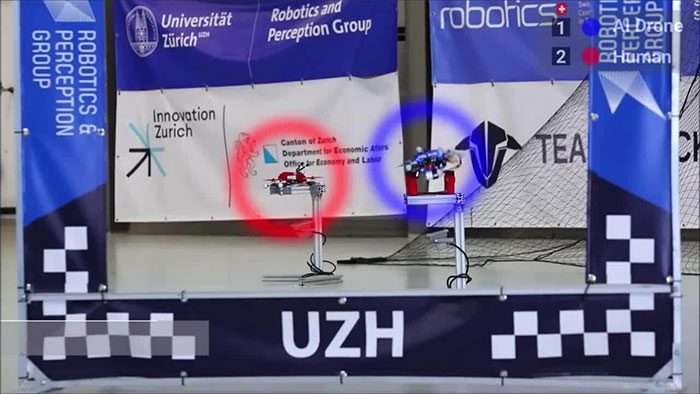Using cameras and sensors, AI-controlled drones outperform human pilots in high-speed obstacle course racing.
AI-controlled drones racing against human-controlled drones. (Video: UZH)
The Swift Autonomous System has defeated three professional drone pilots in 15 out of 25 races on a course filled with twists and obstacles designed by a professional drone racing pilot, Science Alert reported on August 31. The system combines AI algorithms with a camera and multiple integrated sensors to detect the surrounding environment as well as the drone’s movement.
Swift was designed by Elia Kaufmann, a robotics engineer at the University of Zurich, along with researchers from Intel Labs. They aimed to create a system that does not rely on external moving camera input like previous autonomous racing drones.
“Achieving professional pilot-level performance with autonomous drones is a challenge because it requires flying within its physical limits while estimating speed and position on the track solely using onboard sensors,” the research team noted.
The pilots wore special goggles that provided a first-person view (similar to sitting inside the drone) through a camera mounted on the drone. The drone can reach speeds of up to 100 km/h.
Similarly, Swift has an integrated camera and inertial sensors to measure acceleration and rotational movement of the drone. This data is analyzed by two AI algorithms to determine the drone’s position relative to obstacles and issue corresponding control commands.

Pilots wearing special goggles provide a first-person view through the camera mounted on the drone.
Despite losing 40% of the races, Swift often outperformed pilots and recorded the fastest racing time noted, finishing half a second quicker than the best human time.
“Overall, averaging across the entire track, the autonomous drone achieved the highest average speed, found the shortest route, and successfully maintained operational status close to its limits throughout the race,” Kaufmann and colleagues explained.
According to Guido de Croon, a robotics researcher at Delft University of Technology in the Netherlands, the real innovation of Swift lies in the second artificial neural network implemented, which employs deep reinforcement learning. Swift is not the first drone system capable of flying over obstacles, but it does so with superior precision. The new research was published in the journal Nature.


















































